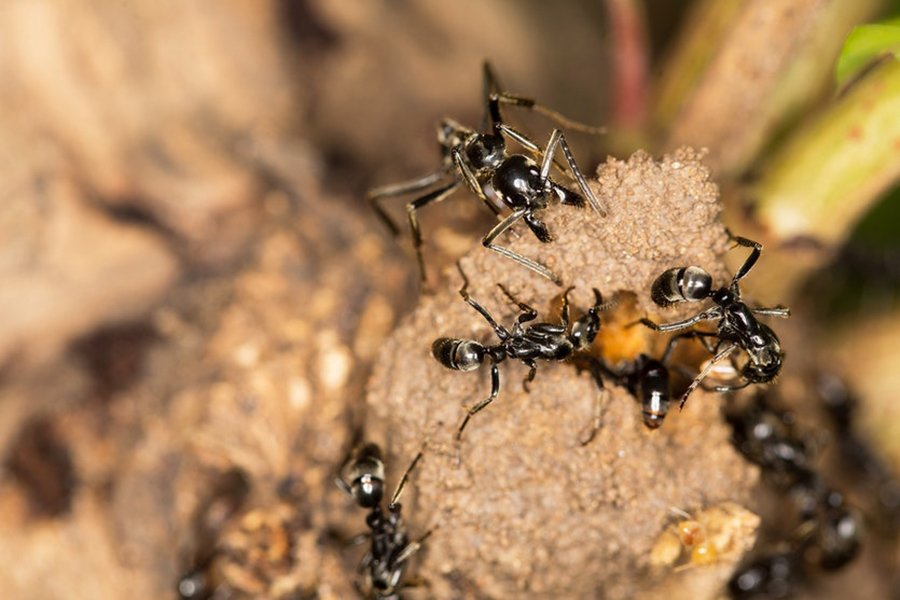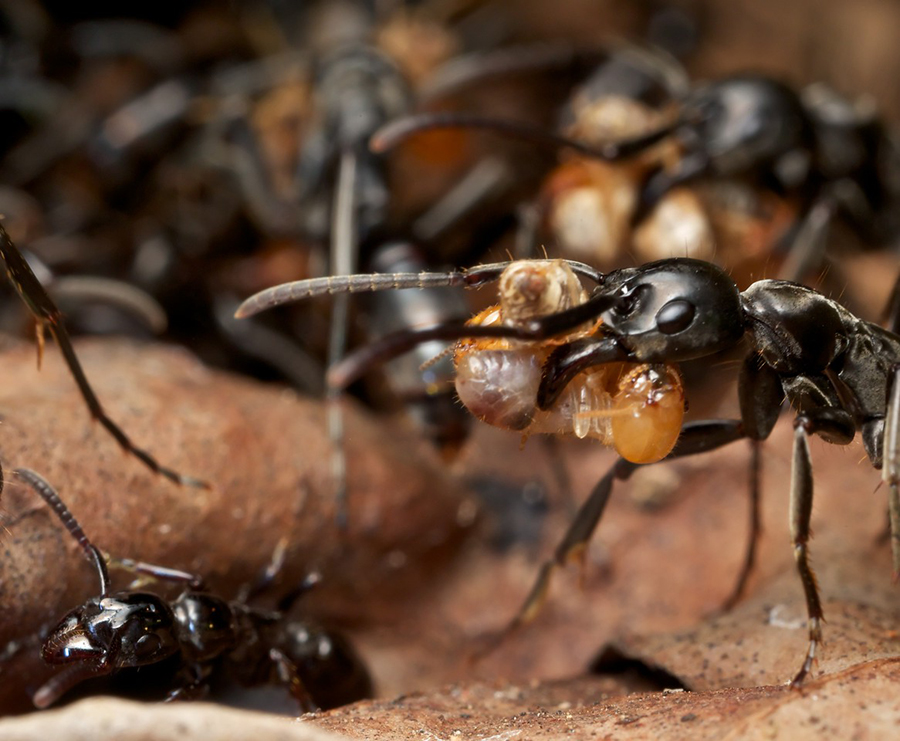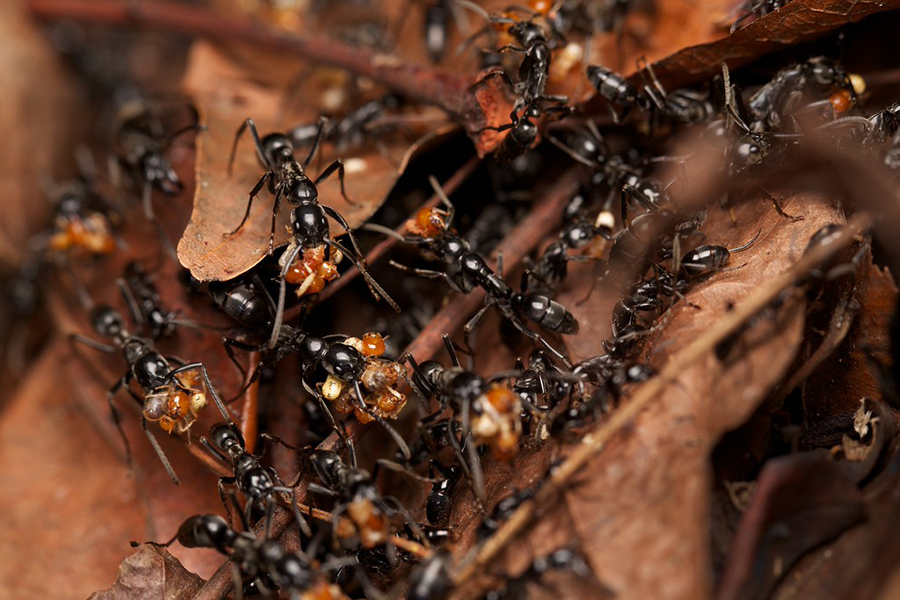A team of scientists published a study on the journal Proceedings of the Royal Society B where they explained the behavioral response of ant Megaponera Analis after they are hurt. This reaction was not just individual but on a social level. They discovered that the insects tend to return to the nest and gather with the wounded ones when they are attacked, for instance, by termite soldiers.
Not all of the wounded ants can expect to get their injuries cured. Thus, they carefully select which one they should treat. As the scientists wrote, the only pick the ones with less severe wounds, while the others presenting greater damage are left aside.
The leader of the study, Dr. Erik Frank from the University of Lausanne in Switzerland, claims this is a fantastic discovery since scientists never understood why the ants help their similars. He states that they knew the bugs took the injured to the nest. However, they never really guessed what happened next. Now, they understand it is all part of a therapy or a healing process.
A warrior ant
The Megaponera Analis is a termite-eating species, considered as a ponerine ant due to its constricted gaster (abdomen). In groups, they form a column-like raiding formation when preparing to attack their prey. It is also one of the world’s biggest ants.
The size of these warrior ants ranges between 5 to 18 millimeters (0.20 to 0.71 inches), and half of their colony is represented by larger workers. These same workers are one out of three types of the total existing inside the settlement. The queen, – which has an enlarged gaster – is on top of the group, then followed by the major worker, and then by the minor worker at last. They have significant differences when it comes to legs, head, and gaster size.

Their raiding activity takes place between 6:00 am, and 10:00 am, then from 3:00 pm to 7:00 pm and between 8:00 pm to 2:00 am. This last phase, which happens late and among ants considered as “distributed” in sub-Saharan Africa, is the less studied one. Their armies are usually formed by 200 to 500 ants.
The colonies of these ants are formed by about 440 and 2300 adults. Once outside the nest, the males are the ones who lead the group inside of it again, using pheromone trails from previous raids. These colonies are thought to be created by the coexistence of two species, considering that the Megaponera is a strictly termite-eating species and the Queen could not face a whole army of termites by herself.
On the rescue
According to scientists Beck, J. and Kunz, on their publication released on Myrmecological News in 2007, named “Cooperative self-defense: Matabele ants (Pachycondyla analis) against African driver ants (Dorylus sp.; Hymenoptera: Formicidae),” this is how the behavior related to cooperative self-defense works:
“While cooperative defence of the nest is well known in ants, cooperative self-defence outside of the nest is much less so. When M. analis ants are attacked by driver ants (Dorylus sp.) outside of the nest, they cooperate with one another in an attempt to defend themselves by checking each other’s extremities for enemy ants and removing any that are clinging to their legs or antennae,” the study suggests,

In the recent study, the researchers portrayed how injured ants curled up into balls to be more comfortable to carry back inside the nest. The ones with several limbs missing, on the other hand, refused to collaborate with their rescuers.
“If you’re able to stand up, you’re very likely not too injured and you are still useful to the colony, so you should be able to call for help and be rescued,” Dr. Frank explains.
When they all come back to the nest, the ants that are whole act as nurses, attending the injured ones by licking their wounds for several minutes. This treatment prevents them even from death.
The study showed that the unattended ants had up to 80% of chances of dying within the next 24 hours, while the ones that were treated had only a 10% o risk.
Infections represent the highest risk of death in injured ants, so the licking-treatment is always needed to prevent it. Additionally, every healthy ant can perform this saving-method, since there is still no sign of a specific kind of ‘medical ant’ to perform it.
What are they doing?

Dr. Frank, despite praising the discovery and verifying some amazing factors of the process, explains that “we don’t know yet if the ants are just cleaning the wound and removing debris, as we do with our wounds to prevent infection, or if they are also applying antimicrobial substances with their saliva.”
Additionally, he reveals that these injured ants, despite missing one or two limbs, can run as fast as the healthy ones. The whole process represents, according to Dr. Frank, a fascinating new way of understanding the species, considering it is rare to find an individual animal treating the wounds of another.
Dr. Frank explains these ants take great care of each other because their colonies are not as big as the ones from other species – only about a dozen of babies is born every day. Thus, every loss is significant, and they just try to reduce their mortality.
Source: Proceedings of the Royal Society B
